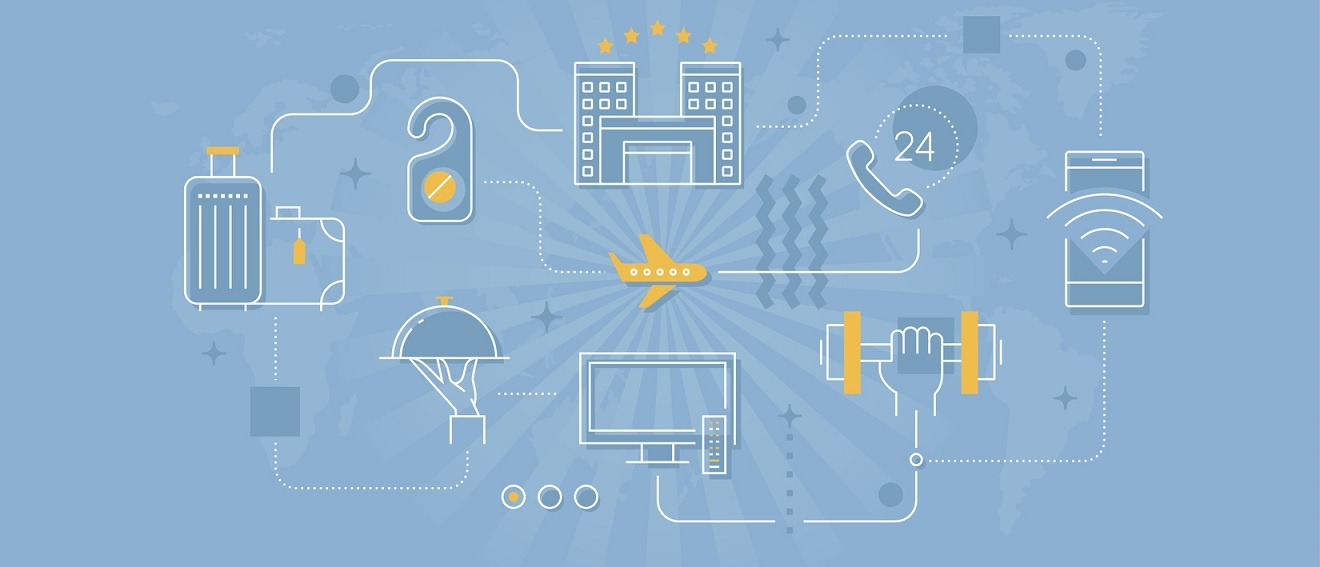Social media has transformed the way businesses interact with and market to their target audiences. For the travel and leisure sector, the rise in the internet and the growing popularity of social channels has fundamentally changed destination marketing.
How social media has changed travel, leisure and destination marketing
From the tools used to research and book the next trip to identifying activities to participate in once they arrive, the ways in which consumers use social media to make decisions has significantly influenced the travel industry – with one profound effect being on online reviews.
According to Google, 70% of travellers have researched their travel plans using a smart phone, with 1 in 2 traveller journeys starting on mobile.
Travel lovers are content hungry – with 55% of people taking just one or two holidays a year, they want to make sure they’re making the right choices with their travel plans.
From crowd-sourced review websites (think TripAdvisor) to social media platforms, people want to hear from people just like them who have booked trips and enjoyed holidays all over the world.
A staggering 72% of adult internet users are on Facebook, Twitter has 328 million active users and Instagram has more than 400 million daily active users. With such a vast user base, social media content is highly accessible and influential.
Social media provides people with the perfect platform to share photographs and videos, especially of any recent trips or visits. According to Internet Marketing Inc. 76% of travellers post holiday photographs to social networks and 52% of Facebook users said their friend’s photographs inspired their travel plans. On Twitter, studies show that those who love to travel are 44% more likely to learn about a new travel brand on Twitter.
If we’ve reached a stage where travellers are deciding their travel and leisure plans based on reviews and social media content, having a good quality and consistent presence on social media is a must for leisure and tourism brands.
How to promote your destination on social media
Social media strategy
As with all marketing activity, it’s essential that you have a strategy in place to ensure that you’re making the most of your efforts and resources. This way you can ensure your social media activity is being measured against the results it drives in relation to wider business goals.
We recommend pulling together a plan to ensure your social channels are appealing to your target audience segments, engaging, varied and ultimately supporting your objectives.
Here are some of our tips for marketing your destination, attraction or leisure brand on social media, that you can include in your strategy:
- Become a trusted source of travel and leisure news
- Show your followers the world - images and video are key
- Use the power of influencers
- Ask questions – why not ask people about their best (or even worst) travel experiences or ask them for their recommendations for things to do in and around your destination
- Listen and respond – remember it’s SOCIAL media!
Organic vs paid social media
Organic social media is anything which you post to social media without paid promotion. When you post content to any social media platform without paying to ‘boost’ or ‘sponsor’ it, you’re creating an organic post.
One of the biggest advantages of organic social media marketing is that it is that the only cost to you and your business is time.
Paid social media includes boosted posts and adverts and can use a variety of demographics, behavioural factors and interests to build highly targeted campaigns. This can help you reach new audiences who fit your target segments, re-engage with past customers, and even remarket to those who have visited our website and engaged with your destination previously. When managed effectively it can be a very cost-effective way to boost brand awareness, increase website traffic and drive conversions such as bookings.
While paid social media advertising has its place, organic posting is ideal for community management – it allows you to listen to your audience and builds a community of people who have a real interest in your brand. Communicating all that your destination has to offer through social channels will help build trust between your brand and your followers and maintain awareness.
Combining these two elements of social media will help provide an impactful digital presence and can increase customers and visitors, so use analytics to see which mixture of paid and organic social activity works best for your attraction, destination or travel brand.
Analytics
Speaking of analytics, it’s key that you use the built-in analytics tools across your social platforms to gain real insight into your performance. Not only will it help tell you what is and isn’t working so you can refine and optimise your strategy and activity – but you can also use it to gain insight into your online audience.
Use this data to discover the kinds of people who are following and engaging with you – and their interests so you can keep ensuring your destination and its marketing activity is consistently hitting the right notes with your audience.
Promoting your destination and highlighting the fantastic choice of activities or services available to visitors is a vital part of raising awareness, increasing footfall and generating revenue – and social media is a fantastic tool for this.

If you’d like to find out more about using social media to promote your destination,get in touch with our social media experts - or download our ebook which helps you understand how to monitor social media in only 10 minutes per day.




